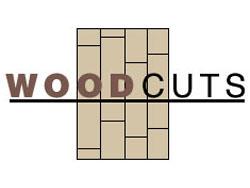Wood Cuts - December 2006
By Rick Berg
The fast food industry got it a long time ago with its suggestion that customers get an order of fries with that burger. Savvy flooring retailers are employing a similar technique that can dramatically improve customer satisfaction and—oh yes—increase profits. Some call it “upselling,” others call it “cross-selling,” but the key to doing it well is to put yourself in a service-first mindset, understanding that customers are more likely to be satisfied with a higher quality installation than the basic one they may have envisioned when they first walked through your door.
“I think the term ‘upselling’ is really a misnomer in a lot of ways,” says Leonard Hall, owner and president of Endurance Floor Co. in Miami, and chair of the National Wood Flooring Association’s Dealer-Contractor Steering Committee. “What do we really mean when we talk about upselling? Low end flooring is the expected norm, but the philosophy we should all live by is that all people want to have the best, and it’s up to us to see that the client places value on our products. As consumers, we’re driven by desires and feelings. For the salesperson, proper selling is about getting in touch with what the customer really wants, as well as having the background of product and technical knowledge to support the sales process, overcome objections and see to it that the consumer is confident that he or she is making the best decision for the best value for their given project.”
“There are multiple options for customers to consider when purchasing a wood floor,” says Ed Korczak, CEO and executive director of the NWFA. “They can add borders, inlays and medallions, often at a price far less than they might have expected. They can also choose from a multitude of wood species, which have the added value of being perceived as out of the ordinary.”
“The nice thing about some of these other species, as well as borders and inlays, is that they don’t actually cost as much as the consumer might expect, so the consumer has a perception of higher value and you can still make a little bit better profit margin on it,” says Ken Schumacher, president of Schumacher & Co. in Newport, Kentucky and vice chair of the NWFA’s board of directors.
Aside from borders, inlays and an array of wood species, there are matching accessories such as moldings and stair parts that add value without adding significant cost.
The fact is, most customers don’t even know what their options are when they come in to buy a floor. The salesperson who can ask the right questions and steer them toward the products that will satisfy their needs and desires is providing a valuable service to his or her customers and also improving the retailer’s bottom line.
Effective Upselling Techniques
• Be knowledgeable: Customers are looking for guidance and will appreciate the salesperson who’s knowledgeable enough to steer them in the direction of a wood floor that exceeds their expectations.
“It’s important to be the designated flooring expert, the go-to guy for wood floors,” says Hall. “If you don’t stand out in the crowded flooring business as an expert, successes at the high end will be few and far between. Being considered the expert lends credibility to recommendations. There are times when a consumer shouldn’t buy a certain type of wood floor, even when their hearts are set on it. As an expert, you should be comfortable and confident to tell them “no” when a particular product is not in their best interest—if they want to put tung-oiled, wide plank, smooth pine floors in a house full of dogs and young children, for example. They’ll respect the fact that you’re honest with them and know your products, and they’ll be confident in the purchasing decision they eventually make.”
• Listen first: Effective upselling starts with letting the customer know that you’re not just there to sell more products, but that you are genuinely interested in their needs and desires, and want to find the best way to meet them.
“The key is listening and forming directive questions so the information logically leads to the selection of the right product,” says Hall. “I get the best results when I can plainly show that the higher end product has more value. It’s not necessarily easy, because each project has unique parameters and variables.”
Mostly, effective upselling is about attitude, as well as aptitude. “It’s like the ice cream vendor who only sells vanilla,” says Hall. “Is it because it’s cheaper and easier to sell vanilla, or because he only knows vanilla and isn’t familiar with other flavors, or because he doesn’t understand his customers’ needs and desires? The retail flooring industry is full of vanilla-selling salespeople who are unwilling or unable to get past the low-price-point mind set. The ice cream vendor could sell chocolate chip mint for more money if he’d only ask his customers what they want. To be successful, you have to know the cost of the product, compare it to the willingness of the customer to part with his or her money—the perceived value—and make sure to earn a profit for providing the product and service. When the customer tells you she wants to buy something, that’s when the fact finding should begin, to learn what it is the customer really wants. Perhaps it really is vanilla, but until all options are explored, you don’t really know. If you project yourself as high end in all things—store, employees, attitude and aptitude—success will come.”
Copyright 2006 Floor Focus Inc
Related Topics:NWFA Expo
